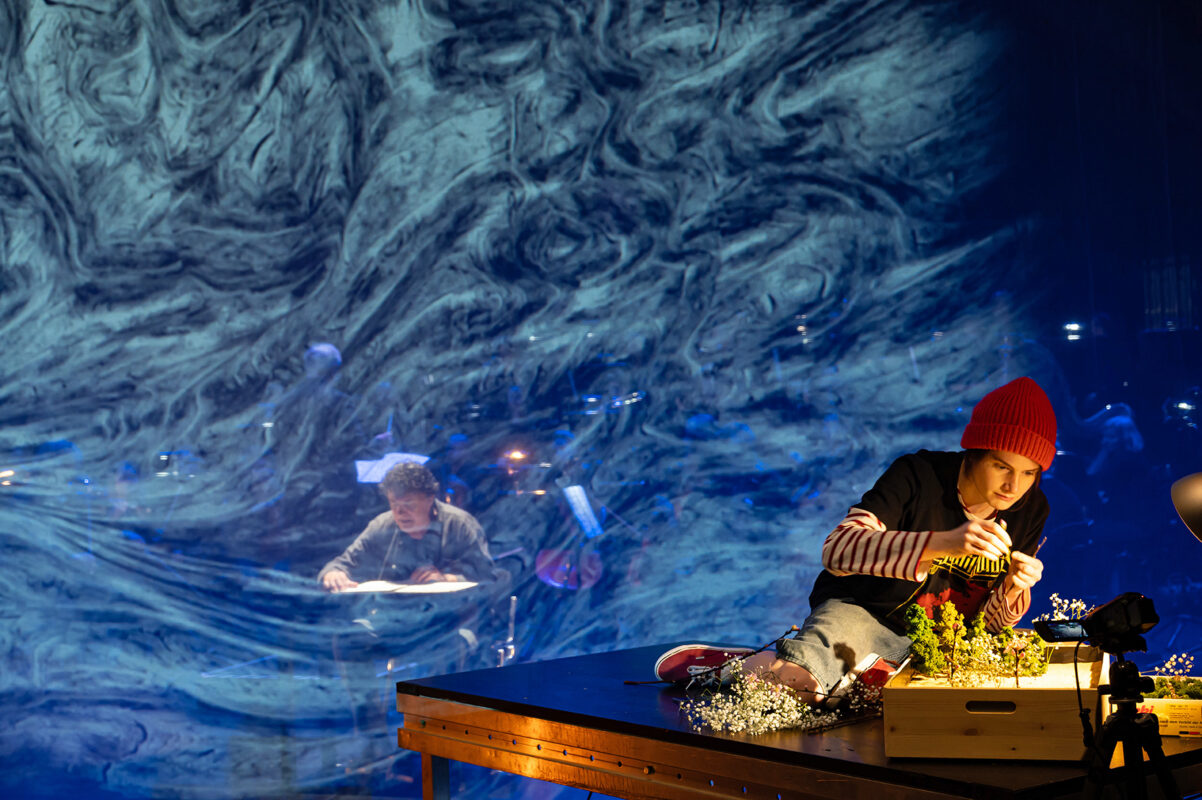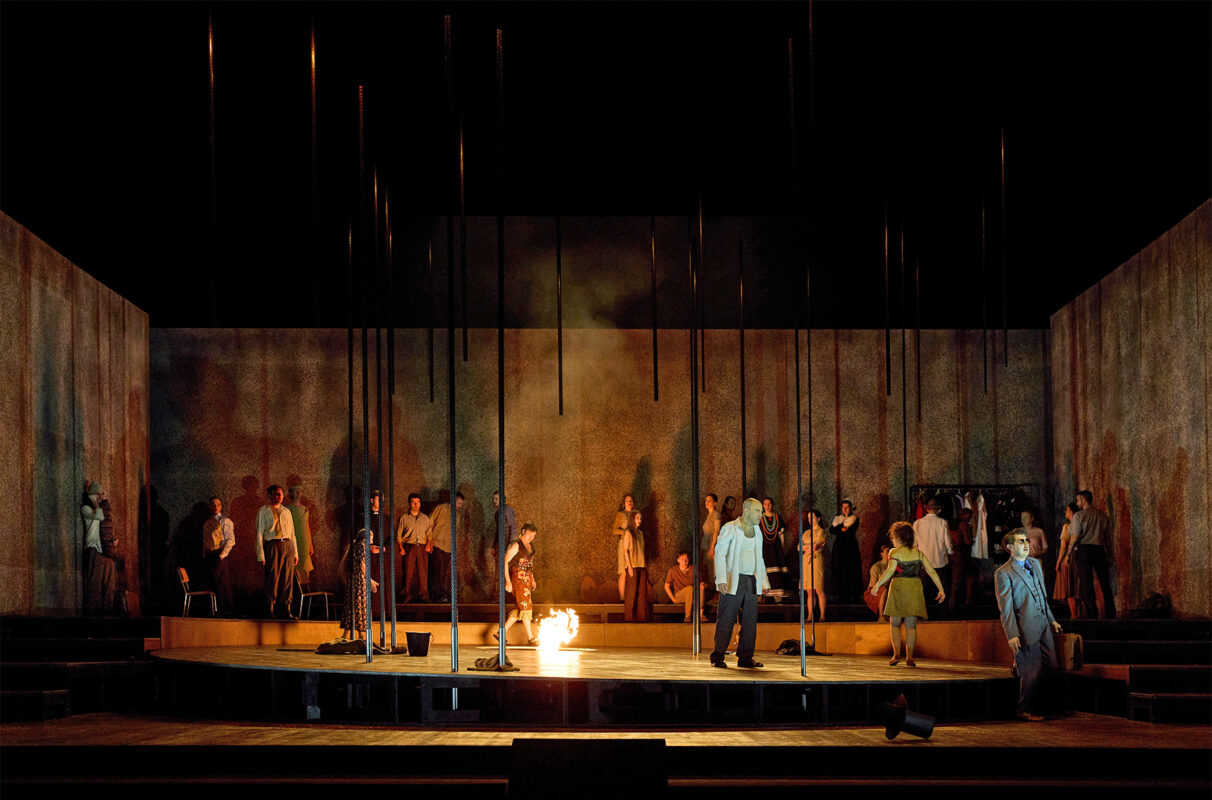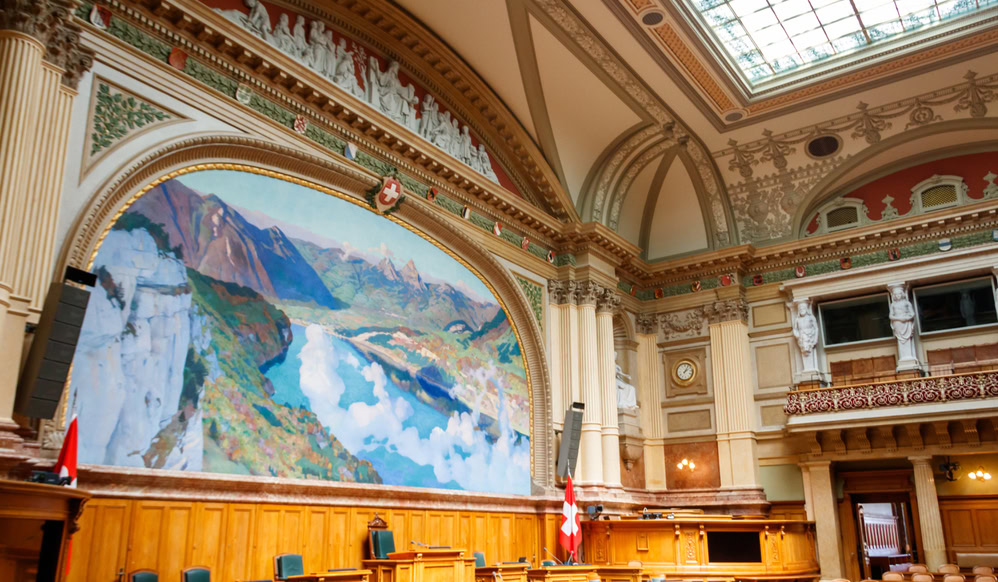Snowy landscape with hunters and fire
Beat Furrer was commissioned by the Berlin State Opera to compose a winter opera that is as enchanting as it is irritating: "Violetter Schnee".
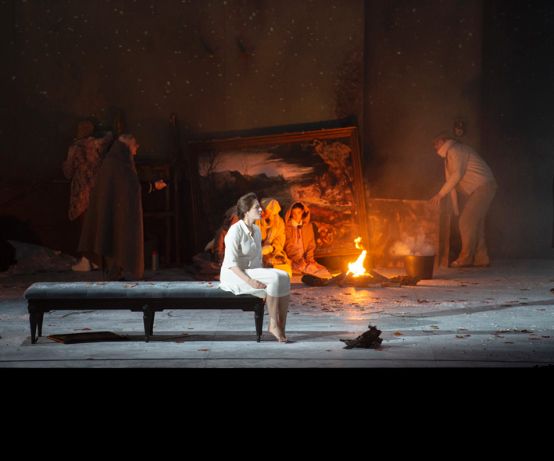
Five people, three men and two women, trapped in a house or a hut, far away, in deep snow. No escape. And it keeps on snowing. The world premiere of Beat Furrer's new opera could not have been more topical than in these January days, when the Alpine region is sinking under the white masses. The initial situation is typical of the Russian writer Vladimir Sorokin, who has already described similar situations in other stories, for example in The snowstorm from 2010. And as always, it doesn't just stick to the bare reality. Certainly, there are brief love scenes, almost romanticized in a hut, there is a quartet over warming tea. Peter is afraid of medical treatment if he is rescued half-frozen. But there are also three ensembles of loneliness, Jacques sings an arietta about dark matter, Silvia tells how a buzzing hornet grew in her viola and blew up the instrument. A dead woman appears, the situations become increasingly unreal, surreal. Did the table burn? Did the five of them eat the snow? In the end, the material takes us into the cosmic-fantastic. The uncertainty of the situation leads to uncertainty about the universe. That is Sorokin.
Eight years ago, he sketched this story for Beat Furrer. Dorothea Trottenberg translated it, and Händl Klaus, long one of the most sought-after librettists of contemporary music, created a linguistic-musical textual basis from it, on which Furrer has now based his new opera Purple snow can play out a whole range of musical forms in a more varied and entertaining way (than before): Duets, which certainly have something operatic about them, arettas, ensembles, all with a high degree of text comprehensibility, by the way; plus choral singing in the background (with the Vocalconsort Berlin), in which Furrer introduces a doomsday scenario by Lucretius (not for the first time) - as a kind of ancient commentary on current events. In between, the orchestra blossoms in all colors from pale white to bright red and back to violet. Matthias Pintscher brings the music to life lucidly with the Staatskapelle Berlin, and an outstanding vocal quintet with Anna Prohaska, Elsa Dreisig, Gyula Orendt, Georg Nigl and Otto Katzameier performs on stage. State opera level in the most positive sense.
Brueghel paintings in a dusky blur
That is one fascination, the other comes from the congenial staging by Claus Guth and his team. Everything fits together perfectly with the music and text: Set design (Étienne Pluss), costumes (Ursula Kudrna), video (Arian Andiel) and lighting (Olaf Freese). It's wonderful to watch the snow drift by. It opens up an additional level.
The moving overture, for example, is accompanied by a projection of a blurred snow flurry, out of which a concrete painting slowly emerges: the "Return of the Hunters", created for a cycle of monthly depictions in 1565 by Pieter Brueghel the Elder, the painter of everyday life with all its playfulness and brutality, with its highs and lows. Here he tells of the joys and hardships of winter. The image is an essential part of the play and appears several times. At the beginning, in the spoken description of the undead Tanja (Martina Gedeck), but also later again and again, together with other Brueghel images. When the characters leave their hut, they are transported out of time into a 16th century setting. Brueghelian figures pass by in slow motion, in patina-clouded colors, in a dusky blur.
The different levels come together here in a dreamlike, somnambulistic way: in a kind of magical realism, narrative and at the same time impassable, with a floating emotionality. Opera does what it does particularly well, it exaggerates, it takes the ground of reality from under its feet. Furrer's new work is contemporary and yet it gets lost ... Where? The Latin "Nix" - snow combines with the German Nichts. There.
And why is the opera called Purple snow? In the final scene, the people, not only the occupants of the hut, but also other figures from Brueghel's tableaux are found on the surface of the stage. In an end-time vision, the light - the moon, the sun, Mars - rises again. The snow shines purple. It's beautiful, the people sing, but they don't understand the phenomenon. Something has changed, something has happened, but we don't know what or why.
-
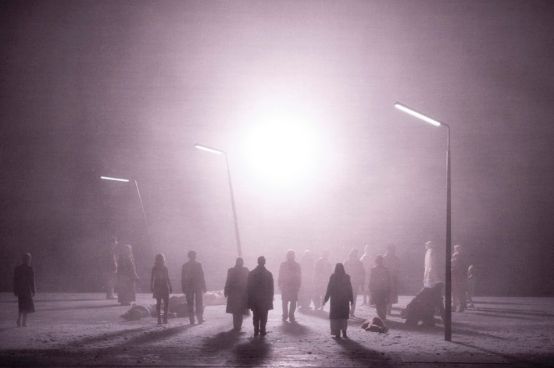
"Violetter Schnee" at the Staatsoper Berlin, ensemble. Photo: Monika Rittershaus
LINKS
Berlin State Opera: "Violet Snow"
Premiere: January 13; until January 31, 2019
See also:
Prelude to the end
Column #26 from the Row 9 from Michael Kube






